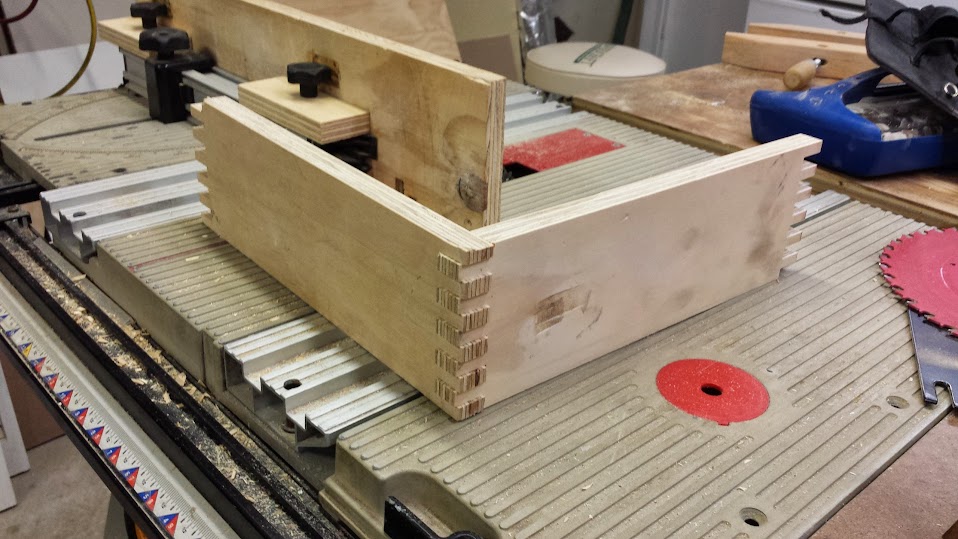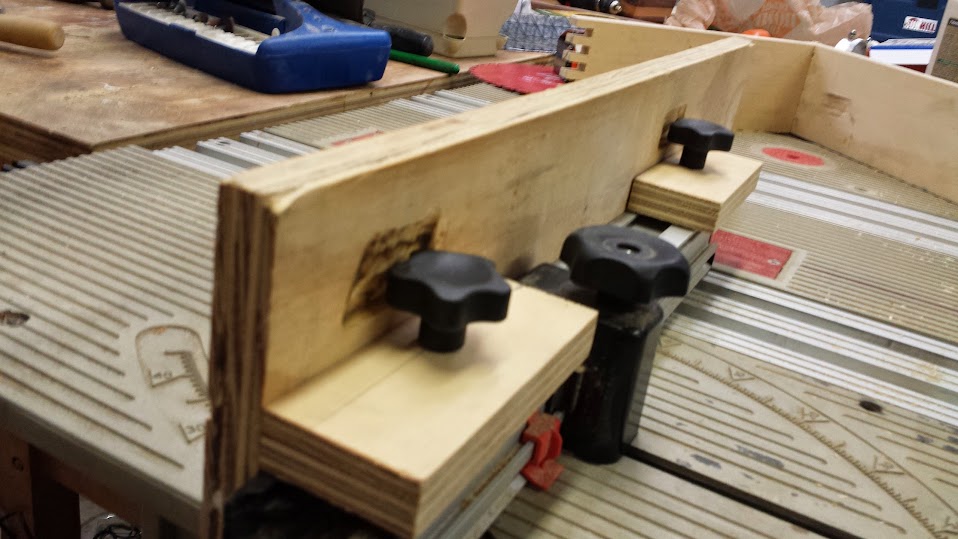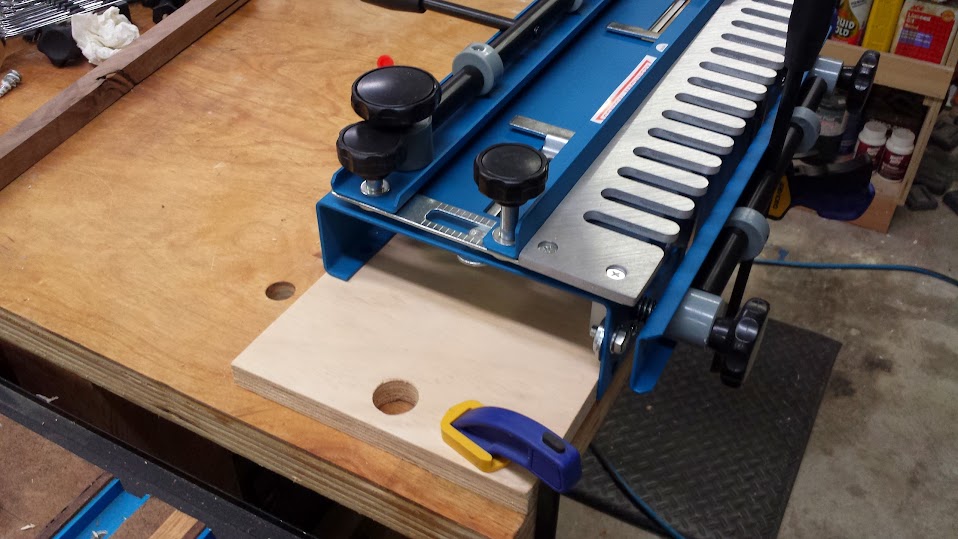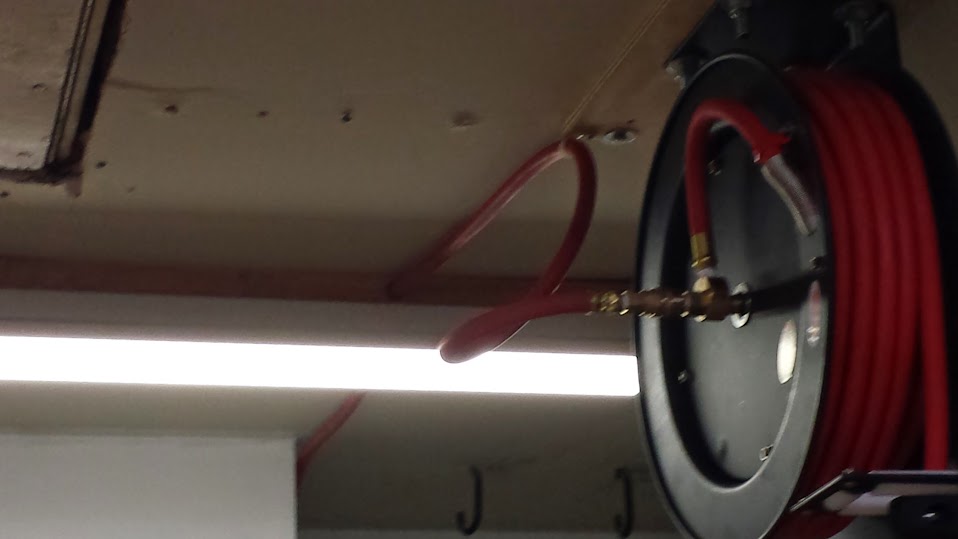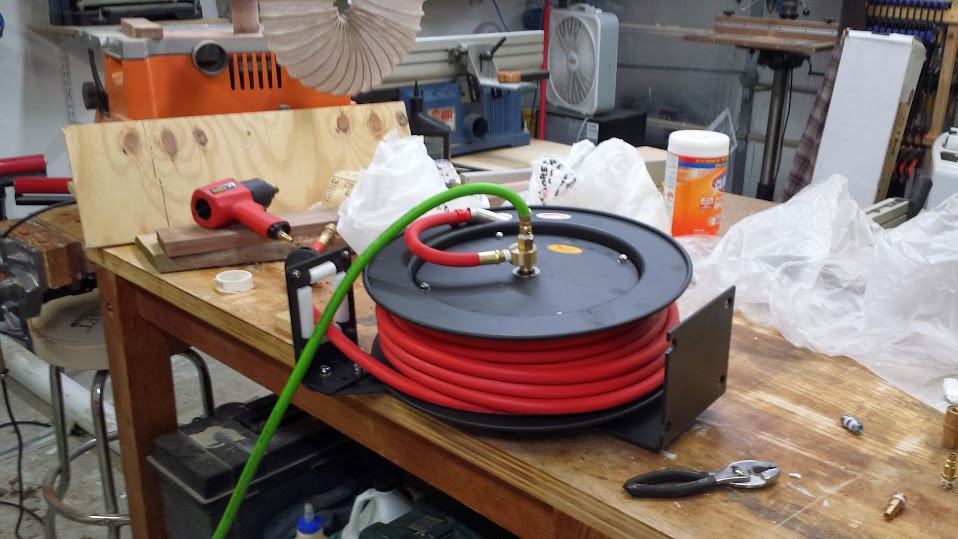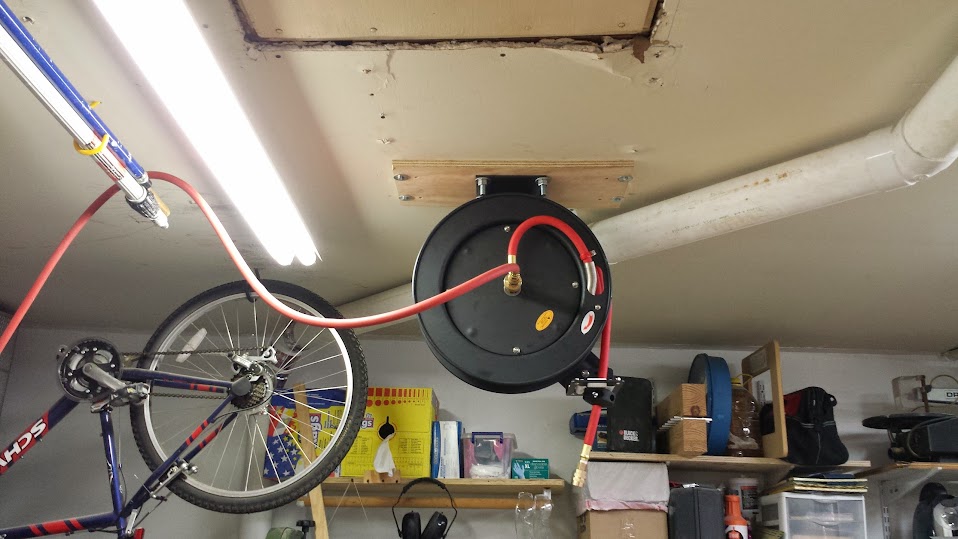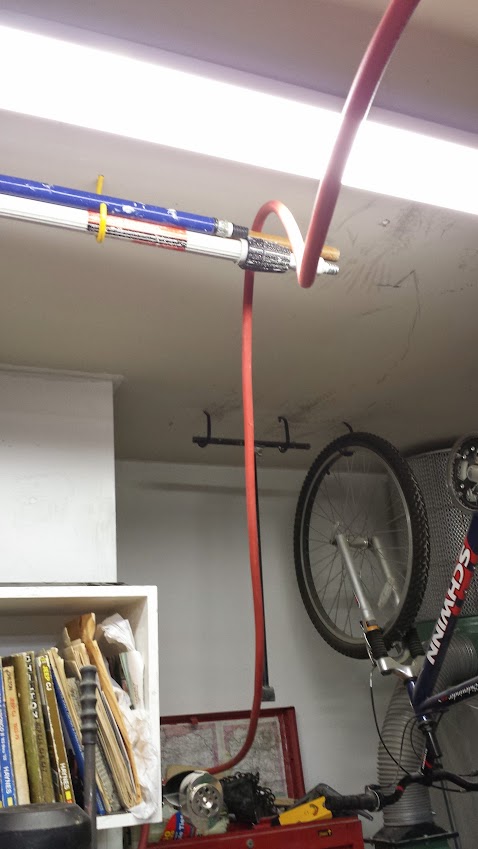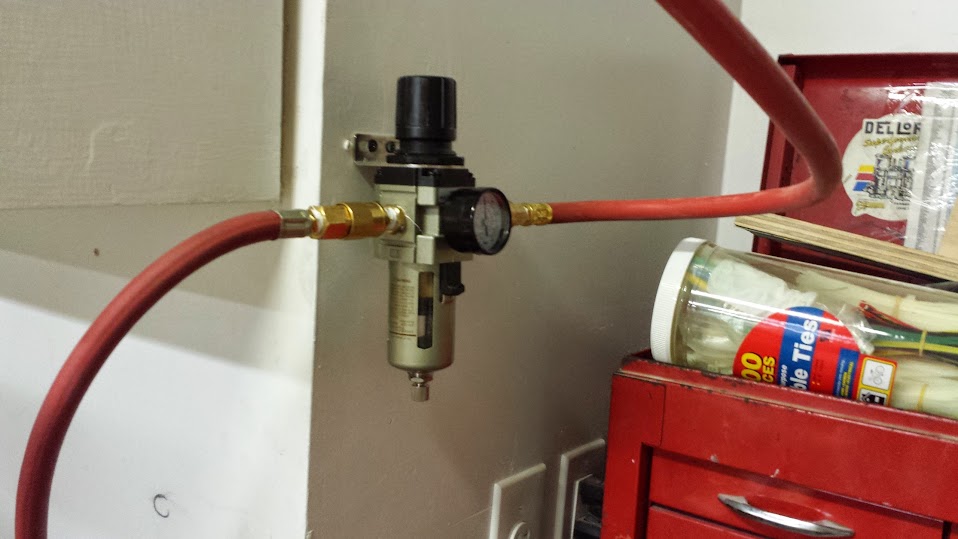Right now, as other projects are ongoing, I am squeezing in design time, and planning to complete what is left of my shop storage / organization tear as it were.
As I fine tune the designs I am going to be squeezing in some of these builds as soon as possible.
#1. Finish building and installing the drawers for the miter saw / mortiser stand / cabinet.
My problem now is that I want to change the design of the drawers and I built it in such a way to make this difficult.
I did this to myself but I can figure it out too!
I designed it with space for 6 drawers in 2 columns of 3, I want to eliminate the middle drawer, and make the bottom drawer double deep. I guess just leave the middle drawer out and go for it, anyway, the now to be double deep drawers will be used to hold on one side, the biscuit joiner, and my cylinders of biscuits, and most likely my buffer, bonnets, and various buffing / rubbing compounds. The other bottom drawer I was thinking about using for my framing nailer, and one or two other large, caseless tools, or maybe just the nailer and the boxes of framing nails... The upper drawers will hold spare blades for the miter saw, clamps, chisel hones etc.. for the mortiser, I also have some granite my brother in law gave me I need to cut up, and I just had a stroke of inspiration on that (half moon masonry tool for the HF multitool!) anyway, the granite will be cut up into sharpening station pieces, for 4 different grits starting at 120 and going up... So store those and the sharpening jigs there.
I still haven't figured out how to get good results with the MLCS dovetail jigs, so I am shifting gears, since these are shop drawers, I figure I will make my joinery using the Harbor Freight dovetail jig. My drawer design is going to be different though. I am using the bottom panel as the slide as well, they extend into a dado-ish void in the sides, and ride, lubed with bees wax. I mismeasured some and had to make thickness adjustments to the bottom panel with a belt sander, but that is a story for a different post... The box sides will be dovetailed. and joinery sides to bottom panel will be via through dowel joinery, probably using 3/8" dowels... I honestly wanted to do some unique joinery / drawer construction mostly for fun... I ended up making this hard on myself...
#2. Install blow in insulation in unpowered wall (remaining wall without insulation). Finalize drywall repair on walls, smooth it all out, paint the non powered wall and overhead door wall. The ceiling / attic ladder framing and drywall repair can wait a while longer. I want to keep the ladder where it is, but it MUST be framed in more securely! Again, the builders and the inspectors over the years have NOT done a good job when it comes to this. It NEVER should have passed inspection!
#3. Sheet goods / cutoffs cart. LOML is getting somewhat insistent. I worked with a guy that had built one on another forum and came up with a workable design that requires 2 sheets of plywood and 4 casters.
I had set up a 3D model with a cutlist of sorts, the orignial designer has updated his cutlist, and it appears to work better, however from what I see in the model, the cutlist he laid out is still a bit, well... inadequate. I have taken the model I built, and created a cutlist from it,
Image source:
http://lumberjocks.com/assets/pictures/projects/274598-438x.jpg
original designers cutlist.
My updated Sketchup model can be found at..
https://3dwarehouse.sketchup.com/model.html?id=u7bcebf6e-5281-4555-a33c-167bbd247334
The original designers project build is hosted on a project post on lumberjocks.com and can be seen at
http://lumberjocks.com/projects/60085
Once the sheet goods rack is finished, I am not certain of what the next project should be, in order to get the maximum usage out of my shop.
The projects that will remain are...
#1. Drill pres base cabinet. A removable cab that will ride on my mobile base to my drill press to hold my handheld drills, as well as bits, hole saws, jigs and misc drilling accessories.
https://3dwarehouse.sketchup.com/mod...af82bdc897cba1
I may have to delay my use / storage jig for the HF Pocket hole jig as I hadn't considered keeping it in the drill press base cabinet. I may possibly just hang it on a peg attached to the side of the cabinet...
I know they are cheap disposables, but I am planning on picking up a Chicago Electric 1/2" Hammer Drill, and a Ryobi One+ Lithium Ion cordless driver / drill... Those will need to be considered for the storage...
With the drill press cabinet out of the way, that frees up one third of the storage on the top of the library cabinet, and a bunch of space on the miter saw cabinet.
#2. Lathe base storage cabinet to house my turning tools, chucks etc... and to enclose at least 2, probably 3 80lb concrete bags in the very bottom for ballast. Design still in progress. Having some difficulty deciding on the drawer layout...
#3. Table saw / Router mobile workstation. I would like to design and build this such that ALL of my table saw / router accessories, fences, jigs, bits, blades etc... store neatly inside, with an effective mobile base, and leveling feet. I have ideas, but need dimensions.
#4. HF DC "Side Flip Stand modification, with Thien Top Hat separator". I suspect we've all seen them, and I want to build one. A stand to reorient my impeller housing to eliminate the connector hose between the impeller and the inlet ring that the bags go on, with the intake pointing straight down into a Thien separator, in this case I want to build a top hat style to go on top of my 31 gallon galvanized steel trash can. Once done, this will be moved off the stand, and on to the floor, giving me room for...
The side flip stand would look something like this Lumberjocks.com member's project except the motor / impeller and ring would be mounted probably 6" higher up to allow for room for a Top Hat Thien separator... I may also change the impeller itself for a larger impeller. I have found a part # that allegedly interchanges, that should move much more air. It always bothered me by how small the stock HF impeller itself is... Oh, and I might just to be different, actually paint my dust collector cart... And possibly the ring, impeller housing, and motor mount... Be good practice with the HVLP gun...
The Thien top hat separator is something like this lumberjocks member's build... I would build mine with a 5" in / out, and not cu the clear window in the side (I check my waste bin often). Also I wouldn't use the clear acrylic for the cylinder part... Just don't see the need...
If you are unfamiliar with what a Thien separator is, it is a particular cyclonic separator baffle invented by BT3Central member Phil Thien. He has his own website detailing it which features a reasonably active discussion forum centering around his separator and dust collection.
http://www.jpthien.com/cy.htm
#5. Above the DC / tool box storage cabinet. This will need to be VERY solidly built, and securely anchored. Remember my shop supports not just woodworking, but also auto repair and home repair. It will hold.
--5A. 8 gallon air compressor. Put this as close as possible to the manifold etc... My 8 gallon compressor is the older version of THIS MODEL with the only difference I can see are the handle, mine is molded plastic where this one is tubular steel, The foot arrangement, mine has one foot, this has two, probably better for stability, and the stickers on the tank... Oh and my compressor is rated .1CFM higher at both 90 and 40 PSI...
--5B. Floor jack and jack stands. The tiny, under capacity for my truck units are going to be cleaned up and sold, replaced with a
Pittsburgh 4 ton floor jack. I am willing to pay more for a better quality jack that has the capacity to meet my needs, but I haven't found one yet!
--5C.
6 ton jack stands. I have some old, orange steel jack stands, I think they are rated to 3 ton, but I am not willing to risk it. Probably sand them down, repaint them, and sell them.
--5D.
Ball Joint Press and
adapter cup set.
--5E.
R134A Manifold Gauge set. Mostly because the friend I borrowed this from doesn't seem to want it back. I don't mind storing it, but Joel, if you see this, please don't think I am not trying to return this to you! Again I don't mind, I just would hate to have any misunderstanding with friends...
--5F.
Pulley remover / installer set.
--5G.
Radiator / cooling system pressure tester.
#6. Replace the simple shelves that are next to the tool stacker with a proper wall cabinet. I want the cabinet to house my spraying equipment, cleaning equipment, shop rags in a box, basically most of the stuff that is on those shelves, plus add more abrasive storage and keep it neat. I don't have a design yet, but trust me, one is coming soon... I will need to insure that I have jig storage factored in there as well for the dovetail jigs, as well as for my box joint jigs.
#7. Design, build, and install some sort of means to store the remaining safety equipment, respirators, cartridges, nitrile gloves, hearing protectors, safety glasses etc.. on the man door where the fire extinguisher and first aid kit live now.
#8. Not sure if I can get my lovely bride to agree to this, but I am considering painting the shop side of the man door bright red to indicate that is the emergency / safety center.
#8. Build a quick & simple rip fence micro adjuster for the table saw. I have plenty of the necessary hardware, and the design is forehead slapping simple, I just need to do it...
So as you see, I have a TON of work left to do to finish just the shop storage projects. I have plenty of projects to do for in, on, and around the house, cars, and my own happy self.. So we will see what gets done and when!














